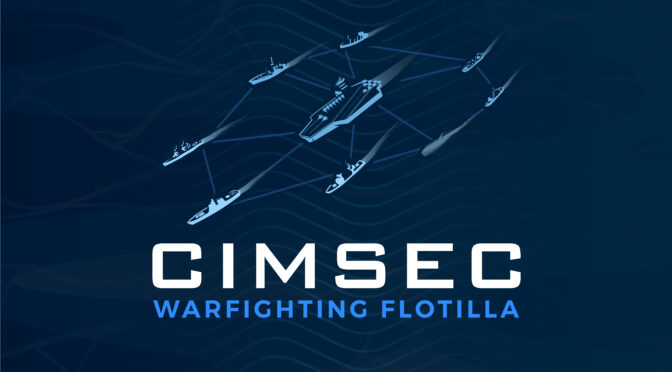By Dmitry Filipoff
This month the CIMSEC Warfighting Flotilla will discuss force development concerns for the naval strike fighter community and will continue the conversation on difficult events that afflicted the Navy’s surface warfare community several years ago. If you haven’t already, sign up through the form below to become a Flotilla member and receive the invites to our upcoming off-the-record July sessions.
Down below is a look at the invites for our upcoming July discussions. The Flotilla will discuss the warfighting skillsets of the naval strike fighter community and whether to make adjustments for great power competition. The Flotilla will also be holding a discussion on the lessons from the 2017 collisions that roiled the surface warfare community and what has changed since.
Last month the Flotilla held discussions on unmanned aviation, offensive mine warfare, and Marine stand-in forces. These productive discussions illuminated various challenges and opportunities in each of these areas and helped inform thinking on the way forward.
Feel free to visit the Flotilla homepage to learn more about this community, its activities, and what drives it.
Upcoming July Sessions
____________________________________________
Learning from Fitz and McCain 5 Years Later
Five years after the fatal collisions involving USS John S. McCain and USS Fitzgerald, what has the Navy learned? Numerous recommendations were put forth by the investigations and reviews. How well have changes been realized? Do deckplate Sailors see a difference, and are operational demands being more carefully managed? Join us to discuss these questions and more as we consider what was learned from these events.
Read Aheads: “Five years later: Inside the Navy’s data-driven quest to avert a future Fitzgerald or McCain collision,” by Megan Eckstein
“Surface warfare officers cautiously optimistic about changes since Fitz and McCain disasters,” by Geoff Ziezulewicz and Diana Stancy Correll
____________________________________________
Naval Strike Fighter Skillsets
The strike fighter community is spread thin across many skillsets and the global war on terror has heavily shaped the operational experience of naval aviators. As the Navy focuses on great power competition, should the strike fighter community reconfigure its focus? Should strike fighters specialize in certain areas or is a more generalist approach required? Join us to discuss these questions as we examine how the strike fighter community could evolve.
Read Ahead: “The Strike Fighter Time Management Problem,” by Stephen Walsh
____________________________________________
Completed June Sessions
USMC Transformation and Stand-In Forces vs. A2/AD
Debates continue apace about the merits of Force Design 2030 and whether it can effectively meet modern high-end threats. Can Marine stand-in forces effectively hold their own against A2/AD systems and enable the joint force? What may it take to effectively transition Marine units into combat credible stand-in forces? Join us to discuss these questions and more as we continue the conversation on Force Design 2030.
Read Ahead: “Stand-In Forces: Disrupting Anti-Access Systems,” by Joseph Mozzi
____________________________________________
Naval Aviation and Fielding Unmanned Systems
Highly capable unmanned aviation is on the horizon and threatens to disrupt traditional concepts of naval aviation. What are the merits of carrier-based unmanned aviation and what will it take to field these systems? What sorts of obstacles exist to their introduction, including tactical, political, and cultural? Join us to discuss the disruptive potential of unmanned naval aviation and more.
Read Ahead: “Winged Luddites: Aviators are the Biggest Threat to Carrier Aviation,” by Noah Spataro, Trevor Phillips-Levine, and Andrew Tenbusch
____________________________________________
Offensive Mine Warfare Against China
Mine warfare is a traditionally underappreciated element of naval capability for the U.S. Navy, but could reap significant dividends in a contingency against China. How could offensive mine warfare be employed in western Pacific contingencies, and what capability gaps deserve closer scrutiny? Join us to discuss mine warfare in the Pacific and what opportunities or shortfalls may exist.
Read Ahead: “Disputing Chinese Sea Control Through Offensive Sea Mining,” by Victor Duenow
____________________________________________
Dmitry Filipoff is CIMSEC’s Director of Online Content and Community Manager of the Warfighting Flotilla. Contact him at Content@cimsec.org.


The jack of all trades problem has afflicted the Hornrt community since I commanded VFA-131 back in 1990. Besides the problems Walsh points out, I found no opportunity to innovate. I wanted to try out patrol plane protection tactics but our schedule was so tight there was no room. (Besides getting myself kicked out of the Topgun CO’s house by advocating too hard) Adding the tanking mission makes it all worse. My suggestion is that the Navy turn over the deep land strike mission to Tomahawk and othe missiles. The old “Alpha Strike” should be abandoned. All squadrons should practice force defense (the DMO force including MQ-4s, P-8s, etc.) But one squadron should go deep into war at sea. Get the MQ-25 to sea ASAP. Troop support could be a specialty of one squadron.